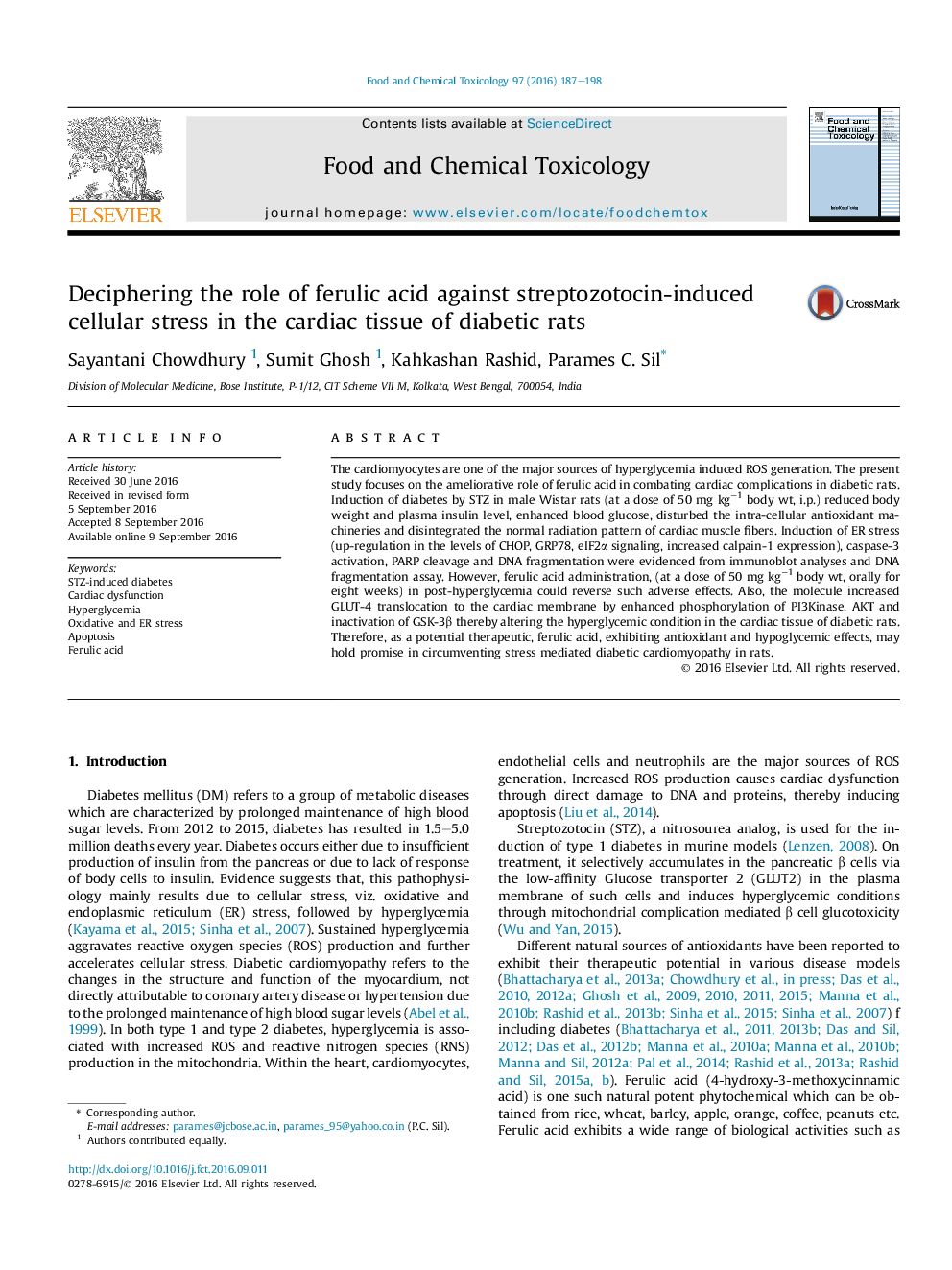| Article ID | Journal | Published Year | Pages | File Type |
|---|---|---|---|---|
| 8549241 | Food and Chemical Toxicology | 2016 | 12 Pages |
Abstract
The cardiomyocytes are one of the major sources of hyperglycemia induced ROS generation. The present study focuses on the ameliorative role of ferulic acid in combating cardiac complications in diabetic rats. Induction of diabetes by STZ in male Wistar rats (at a dose of 50 mg kgâ1 body wt, i.p.) reduced body weight and plasma insulin level, enhanced blood glucose, disturbed the intra-cellular antioxidant machineries and disintegrated the normal radiation pattern of cardiac muscle fibers. Induction of ER stress (up-regulation in the levels of CHOP, GRP78, eIF2α signaling, increased calpain-1 expression), caspase-3 activation, PARP cleavage and DNA fragmentation were evidenced from immunoblot analyses and DNA fragmentation assay. However, ferulic acid administration, (at a dose of 50 mg kgâ1 body wt, orally for eight weeks) in post-hyperglycemia could reverse such adverse effects. Also, the molecule increased GLUT-4 translocation to the cardiac membrane by enhanced phosphorylation of PI3Kinase, AKT and inactivation of GSK-3β thereby altering the hyperglycemic condition in the cardiac tissue of diabetic rats. Therefore, as a potential therapeutic, ferulic acid, exhibiting antioxidant and hypoglycemic effects, may hold promise in circumventing stress mediated diabetic cardiomyopathy in rats.
Related Topics
Life Sciences
Agricultural and Biological Sciences
Food Science
Authors
Sayantani Chowdhury, Sumit Ghosh, Kahkashan Rashid, Parames C. Sil,
